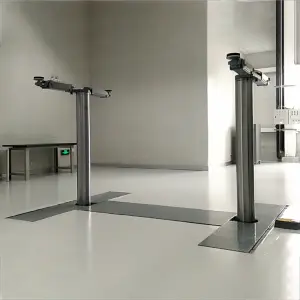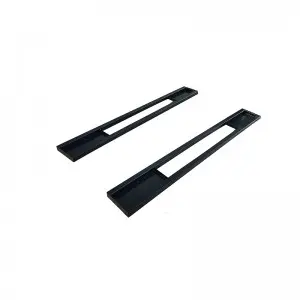****

Exploring the Benefits and Applications of Inground Lifts in Automotive Repair Shops: Why They Are Essential for Modern Mechanics
In the fast-paced world of automotive repair, efficiency and safety are paramount. One of the most valuable tools in any mechanic’s arsenal is the inground lift. These sophisticated machines not only streamline the repair process but also enhance safety and accessibility for automotive technicians. This article delves into the myriad benefits, applications, and considerations associated with inground lifts, highlighting their vital role in contemporary automotive service facilities.
What is an Inground Lift?
An inground lift is a hydraulic lift system that is installed below the surface of the workshop floor. This innovative lifting solution allows vehicles to be raised to an optimal working height, enabling mechanics to perform repairs, inspections, and maintenance with ease. Unlike traditional above-ground lifts, inground lifts conserve space and offer a clean, unobtrusive look to the workshop.
Space Efficiency and Versatility
One of the primary advantages of inground lifts is their ability to save valuable floor space. Since these lifts are installed below ground level, they do not occupy any overhead space, allowing for the maximum utilization of the workshop area. This is particularly beneficial in smaller shops where every square foot counts.
Moreover, inground lifts can accommodate a wide variety of vehicle types, including cars, trucks, and even larger vehicles like SUVs. This versatility makes them a smart investment for any mechanic or repair shop aiming to serve a diverse clientele.
Enhanced Safety Features
Safety is a critical consideration in any automotive repair environment. Inground lifts offer several safety features that contribute to a safer workplace. For starters, these lifts are typically equipped with safety locks that secure the vehicle in place once it has been raised. This prevents accidental lowering, which can lead to serious injuries.

Exploring the Benefits and Applications of Inground Lifts in Automotive Repair Shops: Why They Are Essential for Modern Mechanics
Furthermore, inground lifts reduce the risk of accidents that can occur with traditional lifts, such as slipping or shifting when a vehicle is being raised or lowered. Because the lift is immobile when not in use, there’s less chance of technicians tripping over equipment or sustaining injuries from misplaced tools.
Improved Accessibility for Technicians
An inground lift improves accessibility for mechanics by allowing them to work at a comfortable height. Diagnosing and repairing vehicles often requires reaching under the chassis, which can be uncomfortable when bending or kneeling. By raising the vehicle to the designated height, technicians can work more comfortably and efficiently, reducing fatigue and the risk of musculoskeletal injuries.
Additionally, the low profile of inground lifts makes it easier for technicians to move around the vehicle without obstructions, further enhancing the efficiency of the repair process.
Aesthetic Appeal and Increased Value
Inground lifts also offer a unique aesthetic advantage. With no equipment obstructing the view, workshops can maintain a clean and organized appearance. For shop owners, this can improve the overall ambiance of the service center and create a more welcoming environment for customers.
In terms of investment, integrating inground lifts can add significant value to a repair shop. Clients often perceive a well-equipped, modern workshop as a reliable choice for their automotive needs. Consequently, this can lead to increased customer loyalty and repeat business.
Considerations for Installation and Maintenance

Exploring the Benefits and Applications of Inground Lifts in Automotive Repair Shops: Why They Are Essential for Modern Mechanics
While inground lifts present numerous advantages, potential buyers must consider several factors before installation. The installation process for inground lifts is more complex than that of traditional lifts, typically requiring professional help. This ensures that the lift is installed correctly to meet safety standards and operate effectively.
Routine maintenance is also essential. Regular inspections and servicing are necessary to ensure that hydraulic components remain effective and that safety features function flawlessly. Although they may require more initial investment and upkeep than other lifts, the long-term efficiency and safety benefits often outweigh these concerns.
Conclusion
Inground lifts are an indispensable asset for modern automotive repair shops. They provide significant advantages in terms of space optimization, safety, technician accessibility, and overall shop aesthetics. For any mechanic or workshop owner looking to enhance their service capabilities and operational efficiency, investing in an inground lift is a decision that carries long-term benefits. As the automotive industry evolves, adapting to the latest technologies, inground lifts stand out as a crucial component in delivering high-quality service and repair.Inground lift
